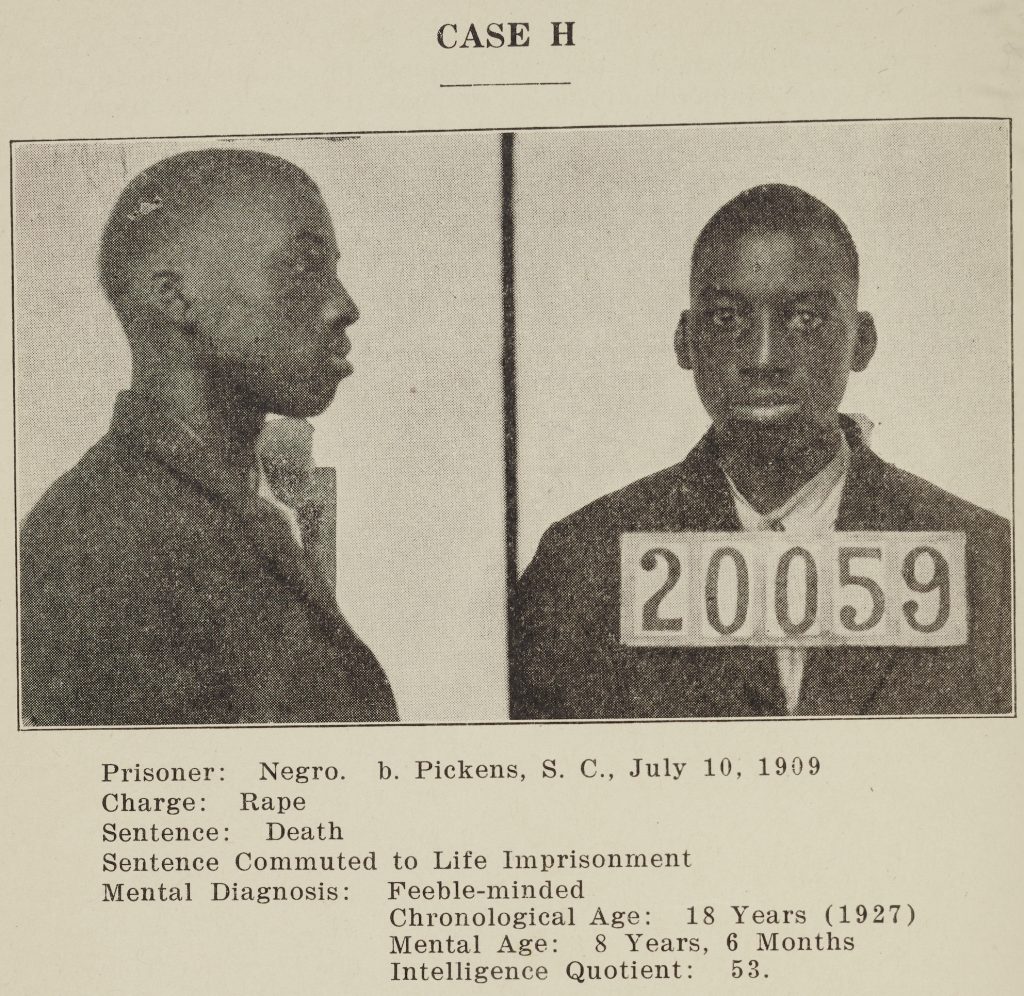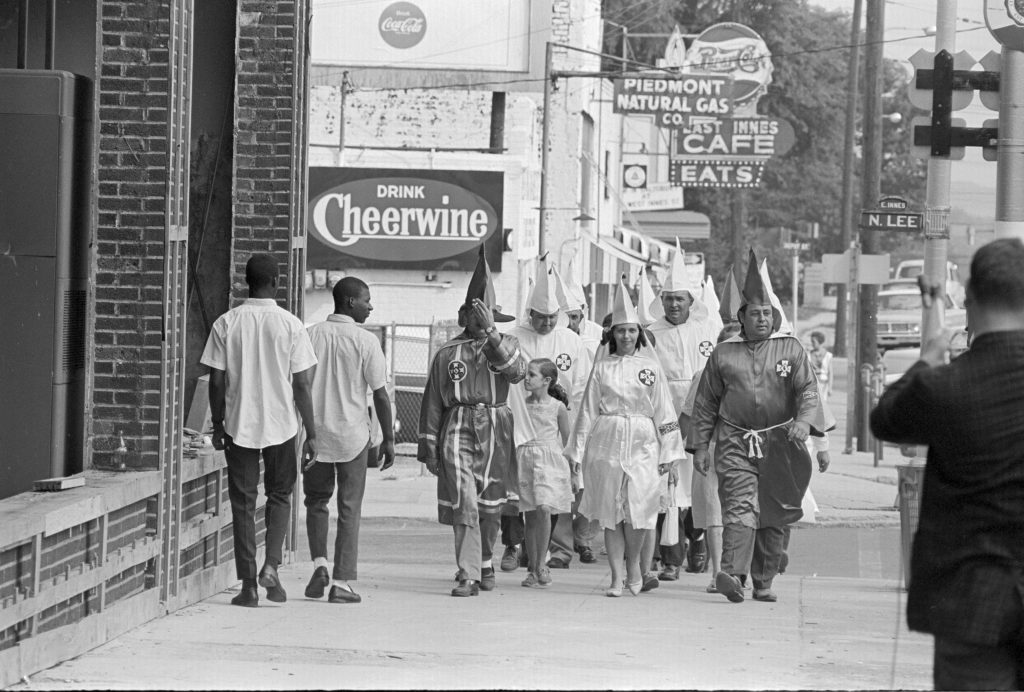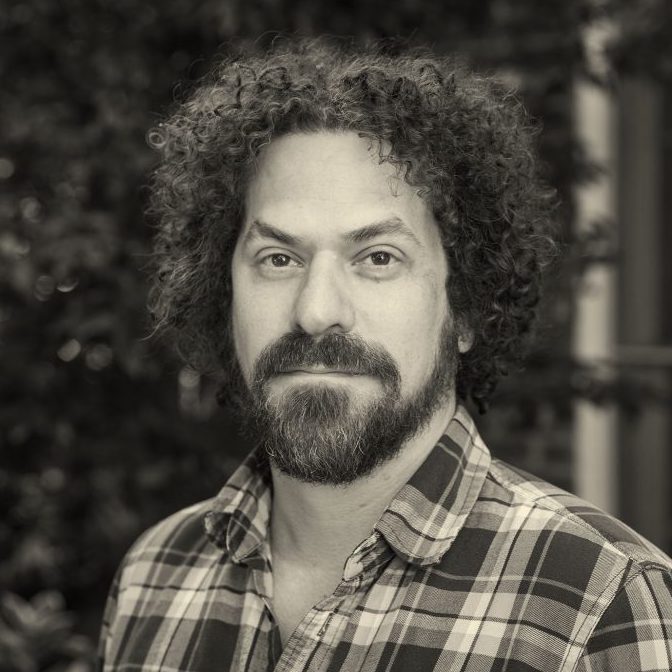In this Chapter
- Historical Overview
- Death Row Profile: Kenneth Rouse
- The Death Penalty is Lynching Dressed Up in the Clothes of Law and Order
- A Juror’s Childhood Memories: ‘They’d take him out and kill him’
- Growing Up with Racism: A Conversation with Andre Smith, Father of a Murdered Son
- Voices from Death Row Lay Bare a Legacy of Racism
More than a decade ago, I started researching a history of North Carolina’s death penalty. I combed through centuries-old newspaper articles and trial transcripts, prison records and governors’ papers. One truth quickly emerged: Any history of the death penalty is a history of white supremacy.
In case after case, I saw the death penalty was a story of impoverished Black men being rushed through sham trials. It was a story of Black children being hanged, electrocuted, or gassed. It was a story of lynch mobs crowding into courtrooms to demand that the law carry out their wishes — and the law often did.
Many people believe that the state-run death penalty was entirely separate from lynching, even if the two resembled each other. They imagine lynching was chaotic and lawless, while the death penalty was carefully organized around principles of law and justice. But the reality of history is that both answered the same demands and reacted to the same fears.
From 1910, when North Carolina created a centralized capital punishment system, to 1972, when the U.S. Supreme Court halted executions and forced the creation of new laws, North Carolina executed 361 people. Eighty percent of them were Black. During these years, the death penalty was, in many ways, another tool of the mob: aimed at terrorizing Black communities and making a show of protecting white people from their Black neighbors.
I turned up story after story of what the Black press at the time referred to as “legal lynchings.”
In case after case, I saw the death penalty was a story of impoverished Black men being rushed through sham trials. It was a story of Black children being hanged, electrocuted, or gassed. It was a story of lynch mobs crowding into courtrooms to demand that the law carry out their wishes — and the law often did.
In 1927, Larry Newsome was a 24-year-old Black man on trial for murder. The family of his alleged victim stormed the courtroom and attacked Newsome during the trial. The judge fired a pistol into the ceiling to break up the scrum. Newsome had to be rushed from the courtroom while the judge held the mob at gunpoint.
The jurors in that rural Wayne County courtroom, all of them white, found themselves in an impossible position. They saw that their white neighbors felt so strongly about the defendant’s guilt that they were willing to attack him in front of armed officers. They knew they would see those people at the grocery store, or that they might knock on their door at night. Even Newsome’s defense attorneys made sure everyone knew that they were representing him against their will. Even if they wanted to — and there is no evidence that they did — would any juror have felt safe voting to save Newsome’s life?
Newsome was executed in the electric chair in 1928. In every meaningful sense, his death was a lynching.


Another story that sticks with me is that of Alvin Mansell, a 17-year-old boy who went on trial for the alleged rape of a white woman in Asheville in 1925. The courtroom was packed with armed militia members, there to protect Mansell from the mob that laid siege to the jail in a failed attempt to lynch him. A speedy trial ended in a death sentence, despite considerable evidence of Mansell’s innocence. The victim described her rapist as 35 and dark-skinned; Mansell was a light-skinned teenager with an alibi.
Trials of Black people were so glaringly unfair that, occasionally, they even provoked the outrage of white people. Mansell’s was one of those cases. Four thousand people, including the rape survivor, signed a petition to save his life. Their letters showed that they understood the value of a death sentence—to scare Black people—even if the execution might never happen.
With a nod to Mansell’s probable innocence, the governor granted him a reduced sentence. Then after five years in a prison labor camp, Mansell was pardoned and released.
Understandably, Mansell fled the South. I traced him first to relatives in South Carolina, then to Manhattan, where he worked as a doorman at the United Nations. He died in New York in 2001, the year I graduated from Columbia University. I wonder if I ever walked through his door, unaware that evidence of the grim history of the death penalty in my home state was standing right in front of me.
The Alvin Mansell I found in census records and death certificates had a family, a job, a home in Connecticut. Mansell’s story is about survival and life-building despite living in a society designed to deny him those things. But it’s also a reminder that lynching is hardly confined to the distant past.
In researching Mansell’s story and others, I realized that even as governors and judges were telling white North Carolinians to stop their lawless lynchings, they were absorbing the goals of the mob into their day-to-day decision making.
As the years wore on, North Carolinians took the process of mob violence and sanitized it. We hid our motives under complex legal procedures and conducted our executions in the early morning hours behind prison walls. We searched for the most painless and silent way to kill people. All these reforms were real efforts to improve the death penalty. But at the same time they were efforts to preserve an institution born out of our worst instincts and basest machinations.
Rather than confronting and eradicating society’s desire to subdue Black people, we disguised it in the clothes of medical technologies and twisted rhetoric about law and order. In doing so, we allowed a racist institution to survive.
Now, more than ever, it’s time to tear off the disguise, see the death penalty for what it truly is, and end it.


Seth Kotch is Associate Professor of American Studies at UNC-Chapel Hill and he published Lethal State, a history of North Carolina’s death penalty in 2019. He is also the author, with Robert Mosteller, of “The Racial Justice Act and the Long Struggle with Race and the Death Penalty in North Carolina,” which appeared in the North Carolina Law Review in 2010. He directs the Southern Oral History Program in the Center for the Study of the American South.
